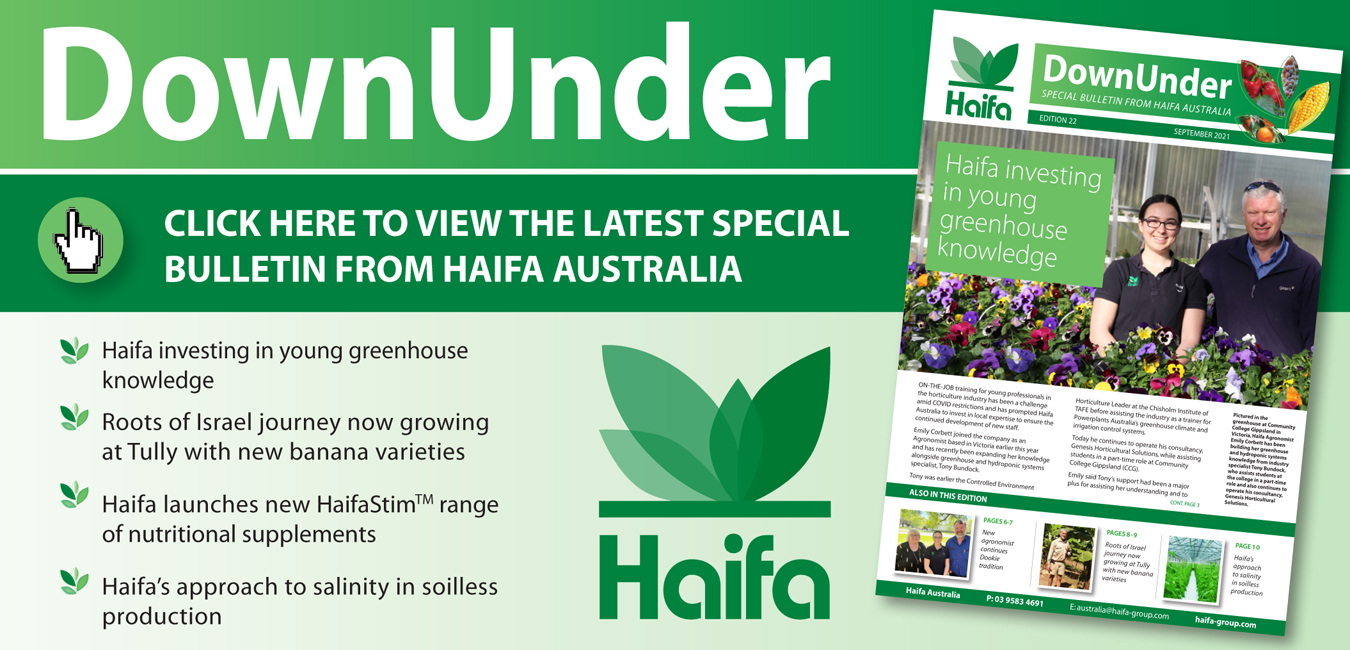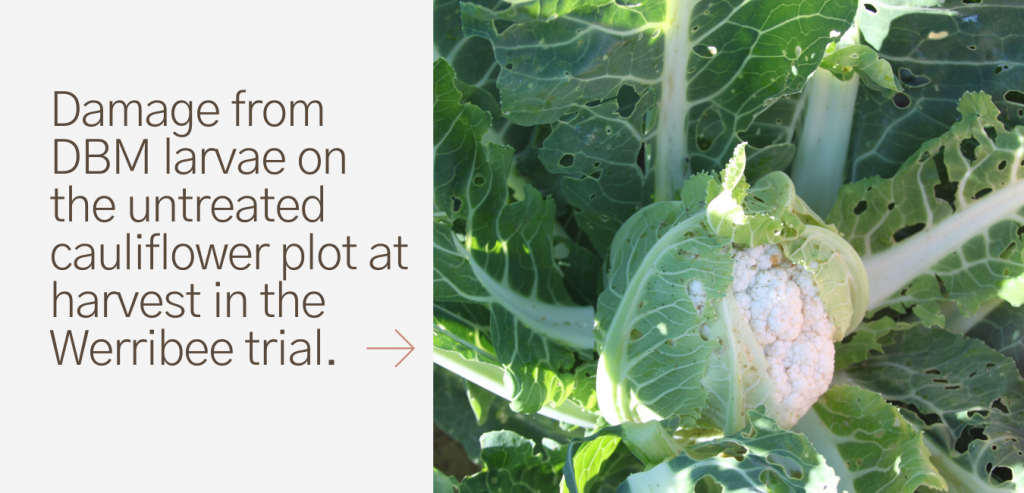
Mammoth edition of Vegetables Australia released!
20 September 2021
DownUnder: View the latest special bulletin from Haifa Australia
28 September 2021It has taken little time for a new insecticide to become a preferred rotational partner against chewing pests in brassica as well as leafy and fruiting vegetable crops.
Plemax®, from ADAMA Australia, has introduced a new mode of action in this segment, novaluron (Group 15), in combination with the trusted strength of indoxacarb (Group 22A). It is particularly helping to combat hard-to-control diamondback moth (DBM) and helicoverpa, whilst importantly extending the life of existing chemistry against these and other key chewing pests.
Indoxacarb already is a widely used knockdown insecticide and its combination with novaluron, a slower mode of action insect growth regulator (IGR), has improved treatment efficacy and reduced the risk of resistance developing. Both also have similar residual activity and rainfastness, further increasing the likelihood of target pests ingesting the active ingredients.
Jake Sullivan, Commercial Manager in Southern and Far North Queensland for ADAMA Australia, said fantastic results with Plemax compared with other insecticides had made it the ideal option for DBM control and, in turn, also had significantly enhanced the company’s profile in the region.
“During two in-field walks in brassica crops in 2020, the reduced shot-hole from the application of Plemax was clearly evident,’’ said Jake, who is based at Maleny on the Sunshine Coast and supports growers in the local area as well as through the Lockyer Valley, Bundaberg region and Northern Tablelands.
Further trials are being planned for this season.
Jake said Plemax was an excellent “rotational fit’’; it would assist management strategies against Group 28-resistant DBM populations; and, it also was effective for integrated pest management (IPM) programs, based on crop monitoring, economic thresholds and beneficial insects.
 In Victoria, ADAMA Australia Market Development Manager Alistair Crawford, who also supports the industry in Tasmania, said brassica and leafy vegetable growers can face about four generations of multiple resistant DBM each year. In Tasmania, DBM from Victoria also can land there.
In Victoria, ADAMA Australia Market Development Manager Alistair Crawford, who also supports the industry in Tasmania, said brassica and leafy vegetable growers can face about four generations of multiple resistant DBM each year. In Tasmania, DBM from Victoria also can land there.
“DBM is the main target for our broccoli, cabbage, cauliflower, broccolini and leafy ‘veg’ growers at Werribee, Cranbourne, to the north east and over to ‘Tasy’, and we do also get helicoverpa,’’ Alistair said.
“There are mild forms of resistance to a number of actives and the dual mode of action knockdown and IGR with Plemax, and its residual, is becoming a key part of insecticide programs in rotation with other chemistry. Group 28 and 2B insecticides are coming under pressure.’’

 For further information on the new Plemax insecticide, growers can contact their local ADAMA Australia representative, sales agent or visit this website.
For further information on the new Plemax insecticide, growers can contact their local ADAMA Australia representative, sales agent or visit this website.


